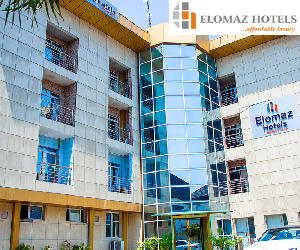Future of Mud: When Germany’s President, Frank-Walter Steinmeier, came to Senegal last February for an economic summit, he took a break from conference rooms in the capital city of Dakar to get his hands dirty, literally, as he learned to make compressed earth blocks from a mix of iron-rich soil, sand, water, and a bit of cement.
His block-making tutorial was part of a groundbreaking event for a cultural institute promoting German-language study.
The institute’s new building was designed by the distinguished Burkina Faso–born and Berlin-based architect Francis Kéré, who is renowned worldwide for his graceful structures adapted to their local climates.

The building in Dakar is oriented so that nearby trees provide shade, and its thick walls— made of the type of unfired compressed-earth bricks Steinmeier tried his hand at making—insulate the interior from the hot Senegalese climate. A layer of claustral, or perforated walls, wraps around the building like a membrane, filtering sunlight and directing airflow.
At the event, Senegal’s minister of urbanism, Abdoulaye Saydou Sow, praised Kéré’s choice of materials, promising that the government would “work to integrate these types of materials into our building projects.” The SenegaleseCameroonian architect Nzinga Mboup, 33, was in the crowd for the occasion, her bronze dress shining amid the sea of dark suits, and she was thrilled by the minister’s speech. Mboup, a co-founder of a Senegalese architectural firm called Worofila, is working with Kéré on his Dakar project.
Read Also: Nigeria records new 7m subscriptions in months
Her firm also works with the local climate, often borrowing low-tech, passive cooling techniques from West African vernacular building traditions. Such simple strategies may not sound revolutionary, but in Senegal’s cities, they are. Today, Dakar is primarily a city of boxy, concrete buildings, their flat roofs used for hanging laundry, lodging sheep, or both.
And new boxes are always sprouting: A panorama of grey-walled construction sites is visible from any balcony, and city sidewalks are chronically clogged with rebar, bags of cement, and piles of sand and gravel. Concrete’s heatretaining properties are all wrong for the Senegalese climate, which will continue to get hotter over the next few decades according to climatechange models. Yet concrete has become the “traditional” building material in a country where, as Mboup points out, at least four distinctive mud-construction techniques persist.
In the north, where there’s not much rain, people build houses with banco, a kind of adobe made with sundried bricks; in the forested areas of the south, builders use timber frames to create wattle-and-daub structures, or they hand-mould earthen buildings and top them with steep, overhanging roofs to keep rain away from the walls. For generations, Senegalese builders have used mud to construct not only small houses and granaries but multistory houses and imposing mosques.





